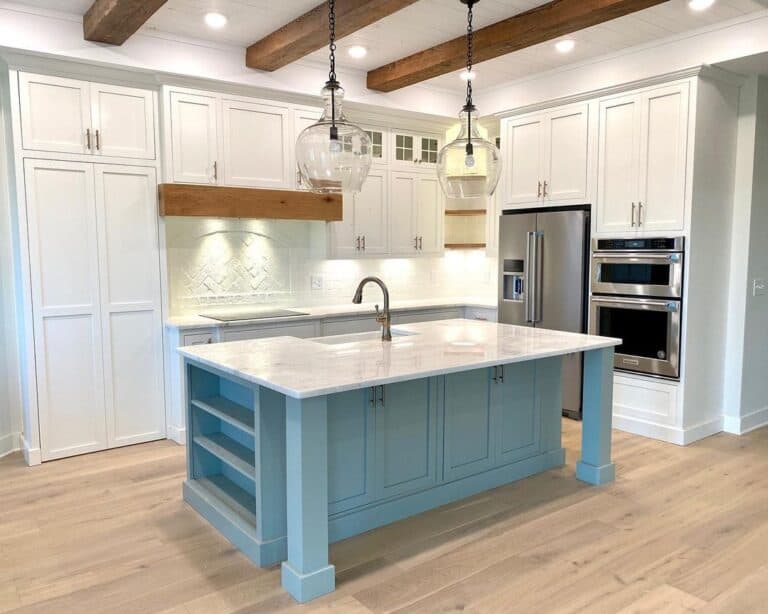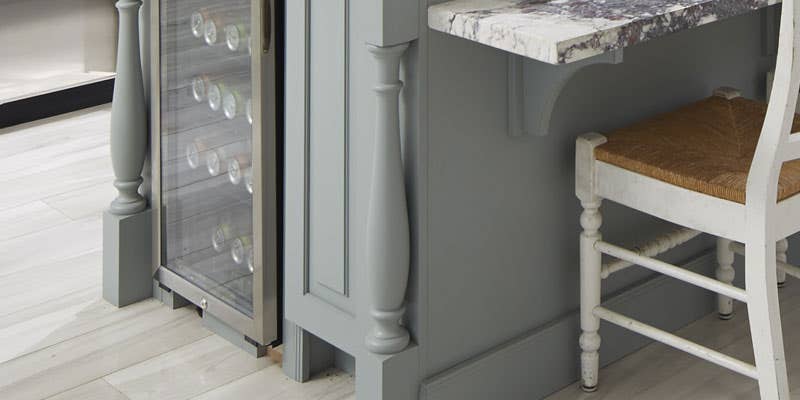Crucial Variables to Consider When Choosing Legs For Cooking Area Island
Selecting the ideal legs for a cooking area island involves a careful analysis of several factors that can considerably influence both performance and visual allure. As we explore these components, it comes to be clear that each choice can have far-reaching effects for the overall cooking area experience.
Material Options
When picking legs for a kitchen area island, comprehending the various material choices is vital for achieving both visual allure and architectural integrity (Legs For Kitchen Island). The selection of product considerably influences not only the sturdiness of the island but additionally its general layout and capability
Timber is a popular choice, using heat and adaptability. Solid hardwoods, such as oak or maple, supply strength and can be discolored or painted to match the cooking area design. Steel legs, usually made from stainless-steel or wrought iron, add a modern-day and industrial feeling while making certain resilience and stability. These materials are immune to use and can sustain substantial weight, making them ideal for bigger islands.
One more option is engineered products, like MDF or plywood, which can be a lot more economical while still using a variety of finishes. However, they might not supply the exact same level of security as strong wood or metal. Products such as acrylic or glass can create a modern look, though they may require added support to make certain security.
Ultimately, the option of material for cooking area island legs must align with the wanted performance and the total style of the kitchen.
Design and Design

When considering style, the shape and finish of the legs are crucial. Tapered legs can provide a sense of agility and elegance, while thicker, much more robust legs can convey strength and stability. Additionally, the coating-- be it painted, discolored, or natural-- should match the cabinets and kitchen counter materials to develop a unified look.
Moreover, the design of the legs can additionally reflect individual taste. Custom-made or decorative legs, such as those including detailed makings or distinct geometric shapes, can function as prime focus, adding character and individuality to the cooking area. Ultimately, the ideal choice will not just boost capability but likewise elevate the visual charm, making the kitchen area island a standout feature of the home.
Height Considerations
Choosing the proper height for kitchen area island legs is crucial, as it straight affects both performance and comfort. The common height for a cooking area island typically varies from 36 to 42 inches, aligning with common kitchen counter elevations. A 36-inch height is excellent for cooking and cooking, permitting comfy use kitchen area home appliances and tools. Alternatively, a height of 42 inches is frequently liked for islands planned for bar seats, accommodating taller stools and using a casual eating experience.

It is also vital to account for customers' choices and elevations. Customizing the height can make certain a comfy experience for all relative, making the kitchen island an extra functional and pleasurable area.
Weight Support
Making certain sufficient weight support for kitchen area island legs is essential for both safety and functionality. The kitchen island typically serves numerous objectives, including cooking, dining, and additional storage, necessitating a durable assistance structure. When picking legs, it is vital to think about the overall weight capability required based upon the island's intended use and the products that will be placed on it.
The selection of material for the legs plays a substantial role in their weight-bearing capabilities. Strong timber, steel, and sturdy composites usually give exceptional stamina contrasted to lighter materials. official source Furthermore, the style of the legs-- whether they are directly, tapered, or have a pedestal type-- can influence their capability to disperse weight effectively across the structure.
Always get in touch with the maker's specifications regarding tons limits to guarantee that the legs can maintain the intended weight without compromising safety and security. In summary, choosing kitchen island legs with adequate weight support is crucial for developing a secure and useful cooking space.
Setup and Upkeep
Correct installment and upkeep of kitchen island legs are critical for ensuring long life and security. To begin, it is crucial to comply with the maker's standards throughout installment. This usually involves protecting the legs to the space station using appropriate bolts, guaranteeing that the legs are level and aligned. Making use of a level device can assist prevent wobbling and enhance the total visual appeal of the kitchen area island.
Once installed, routine upkeep is essential to preserve check it out the honesty and look of the legs - Legs For Kitchen Island. For wood legs, routine cleansing with a wet towel and application of suitable timber polish can protect against moisture damage and preserve their coating. Steel legs might need a gentle cleansing service to get rid of oil and gunk, adhered to by a completely dry towel to stop rust development
In addition, evaluate the legs on a regular basis for signs of wear or damage, such as splits or loose joints. Tightening screws or bolts as needed can additionally lengthen the lifespan of the legs. By adhering to these installment and maintenance methods, property owners can make certain that their kitchen area island continues to be strong and aesthetically appealing for many years to find.
Conclusion

Aesthetic comprehensibility is vital in picking the design and layout of legs for a kitchen island, as these aspects significantly affect the overall ambiance of the space. Conical legs can supply a feeling of lightness and sophistication, while thicker, more robust legs can convey toughness and stability.Selecting the ideal height for cooking area island legs is crucial, as it straight impacts both functionality and comfort. In summary, picking kitchen area island legs with adequate weight support is vital for producing a secure and useful cooking room.
In final thought, choosing legs for a kitchen island necessitates careful factor to consider of numerous variables, including product alternatives, design, height, weight assistance, and setup.